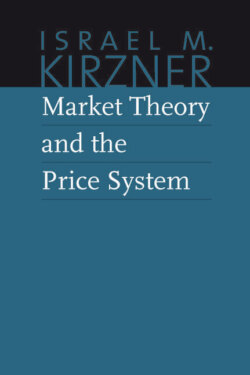Читать книгу Market Theory and the Price System - Israel M. Kirzner - Страница 52
На сайте Литреса книга снята с продажи.
SUMMARY
ОглавлениеActing men, in choosing between available alternatives, arrange them in order of preference. The scale of values made up in this way indicates the relative marginal utilities of different specific quantities of different goods and services. Men act so as to replace a good of lower marginal utility by one of higher marginal utility.
The marginal utility of successively available additional units to a stock of a commodity steadily diminishes, other things being equal. This is the law of diminishing marginal utility.
Goods are either related or unrelated. Related goods may be either complementary to one another or substitutes (rivals) for one another. Complements are goods whose marginal utility rises, other things being the same, as the quantity possessed of the others increases. Substitutes are goods whose marginal utility falls, other things being the same, as the quantity of the others increases. Unrelated goods are those whose marginal utilities are unaffected by the quantities possessed of the other.
The marginal utility view is able to resolve the classical paradox concerning the relative values of diamonds and water. The utility concept is subjective and relative in character. The utility of a good refers to nothing inherent in the good itself and is meaningless unless it refers to a comparison with the utility of something else. Utility is an ordinal concept. No cardinal “units” of utility are implied in utility theory. “Marginal utility” is therefore to be interpreted not as the “rate of change of total utility,” but as the (total) utility afforded by an increment of a good or service.
The utility theory provides the framework to understand exchange between market participants. Exchange will take place wherever the value scale rankings of two goods possessed by one man are different for him than the corresponding ranking for another man. In a market there is therefore a constant tendency for participants to exchange so that the value scale of each represents rankings identical with that of every other participant, for goods possessed by each of them.
